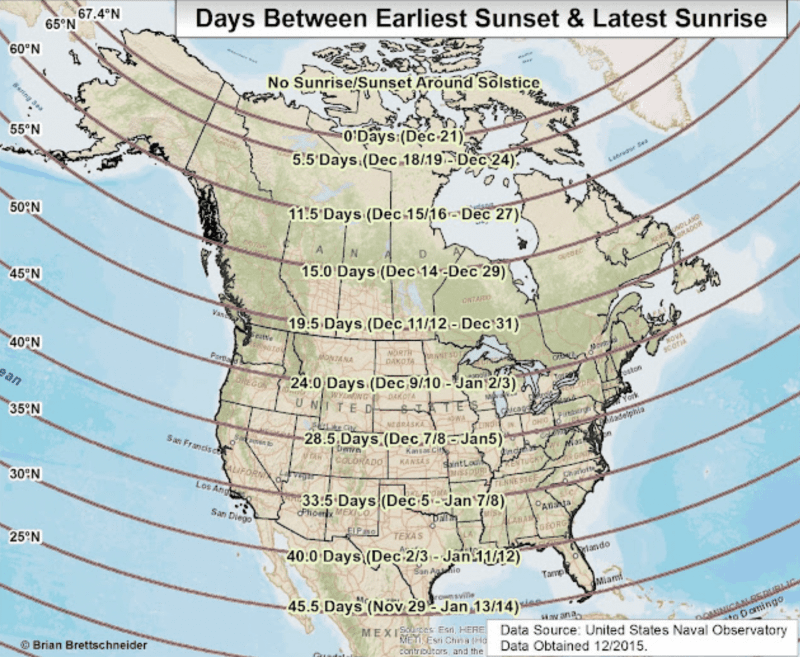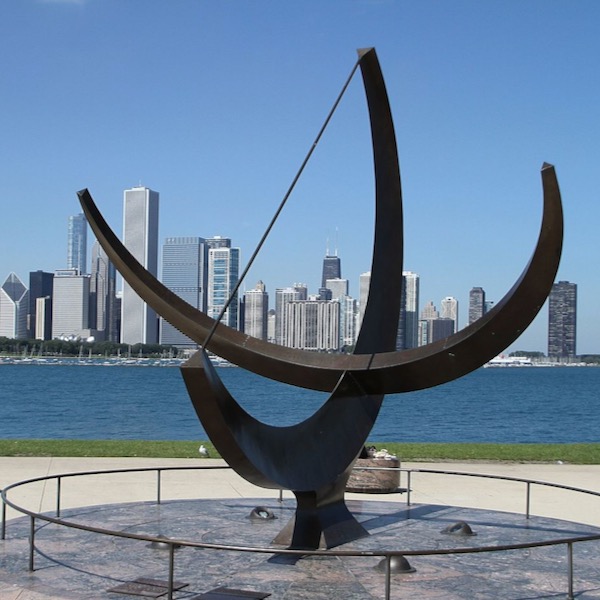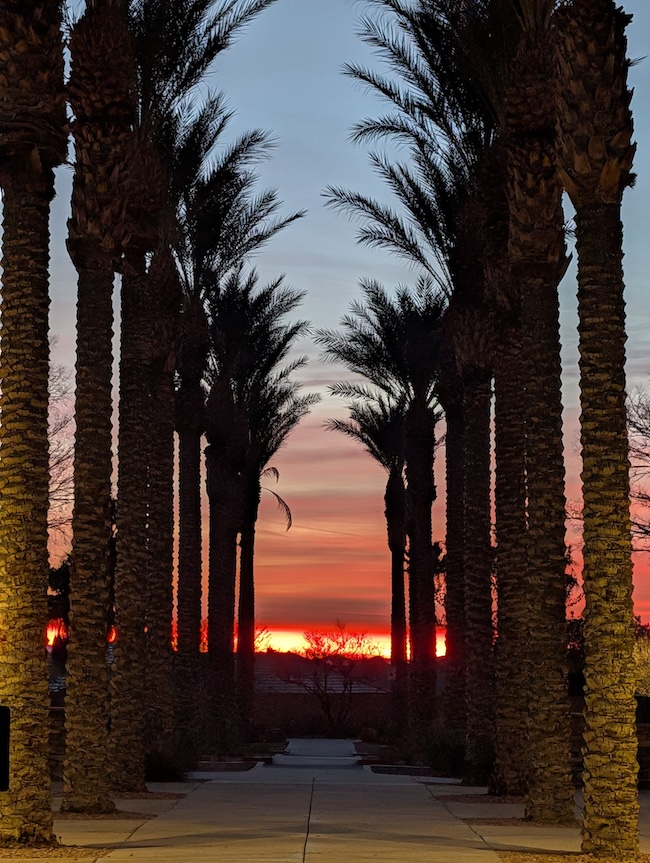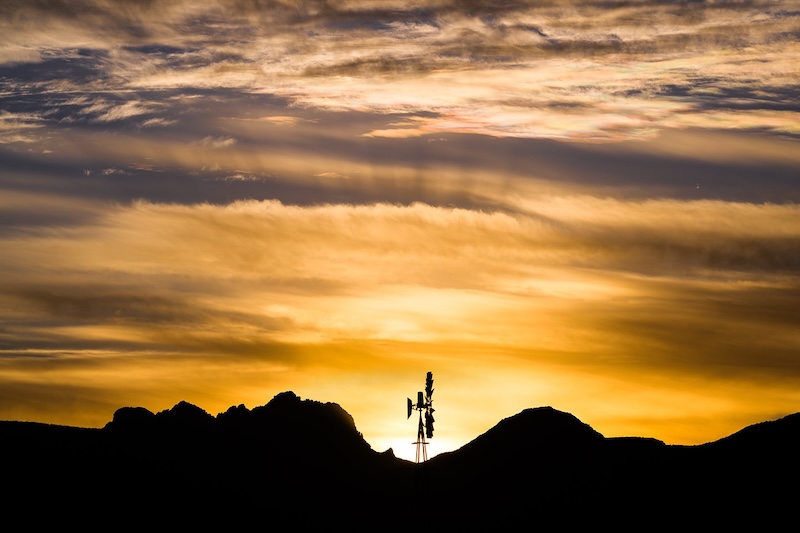
Latest sunrises
If you get up early, you know that, in late December and early January, your sunrises are still coming very late. In fact, they’re the latest sunrises of the year for people at mid-northern latitudes (say, the latitude of the central U.S.). Overall, our days have been growing longer since the December solstice. But the sunrises have still been coming later and later. That’s due to an unvarying sequence each year – earliest sunset in early December, shortest day at the solstice around December 21, latest sunrise in early January – for the Northern Hemisphere.
In fact, this natural order is what we can expect every year on our tilted Earth, pursuing our elliptical orbit around the sun.
Meanwhile, if you live in the Southern Hemisphere, you’re in the midst of an equally lovely, but more bittersweet, time of year for sunrises and sunsets. That’s because your earliest summer sunrises happened a few weeks ago. And your latest sunsets are beginning around now, and will extend for the next couple of weeks, assuming you’re at mid-southern latitudes. So your sequence is: earliest sunrise in early December, longest day at the December solstice, latest sunset in early January.
Visit Sunrise Sunset Calendars to make your custom sunrise-sunset calendar.
The 2025 lunar calendars are here! Best New Year’s gifts in the universe! Check ’em out here.

Clock time and sun time
The December solstice always brings the shortest day to the Northern Hemisphere and the longest day to the Southern Hemisphere. But, clearly, the latest sunrise doesn’t coincide with the day of least daylight. And the latest sunset doesn’t happen on the day of greatest daylight. Why not?
The main reason is that the Earth’s rotational axis is tilted 23.5 degrees out of vertical to the plane of our orbit around the sun. A secondary reason is that the Earth’s orbit isn’t a perfect circle. Due to our eccentric orbit (that’s an orbit shaped like a squashed circle, with the sun slightly off center), Earth travels fastest in January and slowest in July.
So clock time gets a bit out of sync with sun time by about 1/2 minute per day for several weeks around the December solstice.
And because solar noon (midday) comes later by the clock now than on the solstice, so do the times of sunrise and sunset.
By the way, in 2007, the end of daylight-saving time moved from the last Sunday in October to the first Sunday in November. So now, depending on your latitude, the latest sunrises may occur at the end of October or the beginning of November.
The sequence is always the same
The exact date for the latest sunrise or latest sunset varies by latitude. This week, mid-temperate latitudes in the Northern Hemisphere are waking up to their latest sunrises, while the Southern Hemisphere’s mid-temperate latitudes are watching their latest sunsets. At latitudes closer to the equator, the latest sunrise or latest sunset has yet to come. Closer to the Arctic or Antarctic Circles, the latest sunrise or latest sunset has already come and gone.
But in either the Northern or Southern Hemisphere, the sequence is always the same:
1) earliest sunset, winter solstice, latest sunrise
2) earliest sunrise, summer solstice, latest sunset


Bottom line: Do you notice the time of sunrise and sunset at this time of year? If you’re in the Northern Hemisphere, at mid-northern latitudes, your latest sunrises happen around early January. If you’re in the Southern Hemisphere, mid-latitudes, you are watching the year’s latest sunsets. Enjoy!
Earth comes closest to the sun in early January